Books - Read and Enjoyed
The First Global Village
How Portugal Changed the World
Martin Page
Casa Das Letras, 2012
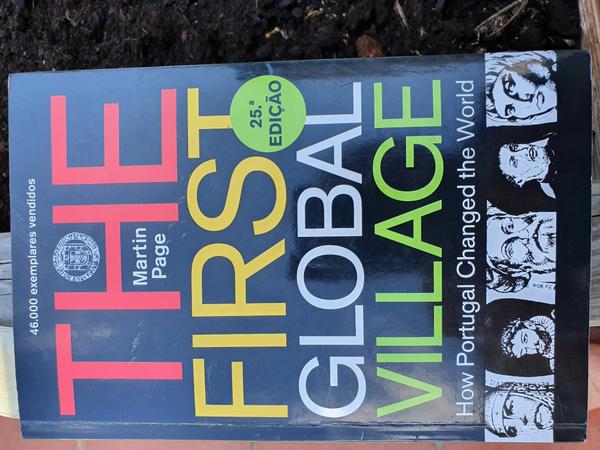
In April 2022 we made a hiking vacation with WeltWeitWandern in the Algarve (see some impresssions from that trip: Album Bilder). At the end we spent two days in Lisboa where I bought this book in the Book store Livraria Bertrand. This book store is certainly worth visiting, if not for its grand architecture and the assortment of books, then because it claims to be the oldest operating book store of the world, open since 1732.
I must admit that Portugal and its history has so far been known to me only peripherally. I had never taken much interest in this Atlantic nation and I had not visited it before. So with some surprise I found during this trip a beautiful country with likable people and a long, diverse and rich history.
It seems the Atlantik shores of Portugal have been settled by the Mediterranean seafarers from very early times on. Phoenicians, Jews, Cypriots, Greeks, Carthaginians have all visited and settled there meeting and trading with Celtic tribes in the centuries before the Roman empire fully asserted its claim over the Iberian peninsula. The Romans extracted gold and other minerals en masse with sophisticated deep shaft technology that could not be replicated for many centuries.
The 500 years of Islamic rule (726-1249) brought Portugal stability and a significant advance in science, technology and agricultural knowledge. It was by and large relatively liberal, tolerant towards other religions and fostered commerce. The succeeding Christian rulers after the Reconquista were markedly more intolerant not only against Moslems but also against Jews and, later, against Protestants. Intolerance against all kinds of aberrations and orthodoxy culminated in the time of the Inquisition which spilled over from Spain.
Two times in its history Portugal was a leading nation with respect to science and technology: The first time 1480 till the middle of the 16th century, when it was also the richest nation in Europe. The second time in the middle of the 19th century.
1481-1540
Portugals golden time was prepared by key technical innovations and then set in motion by the grand ambitions, exquisite leading skills and a substantial amount of good furtune under the reign of King João II (1481-95).
The technical innovations that played together to facilitate much longer voyages than ever before, where the caravel ships, the compass, the Portolan chart and the astrolabe.
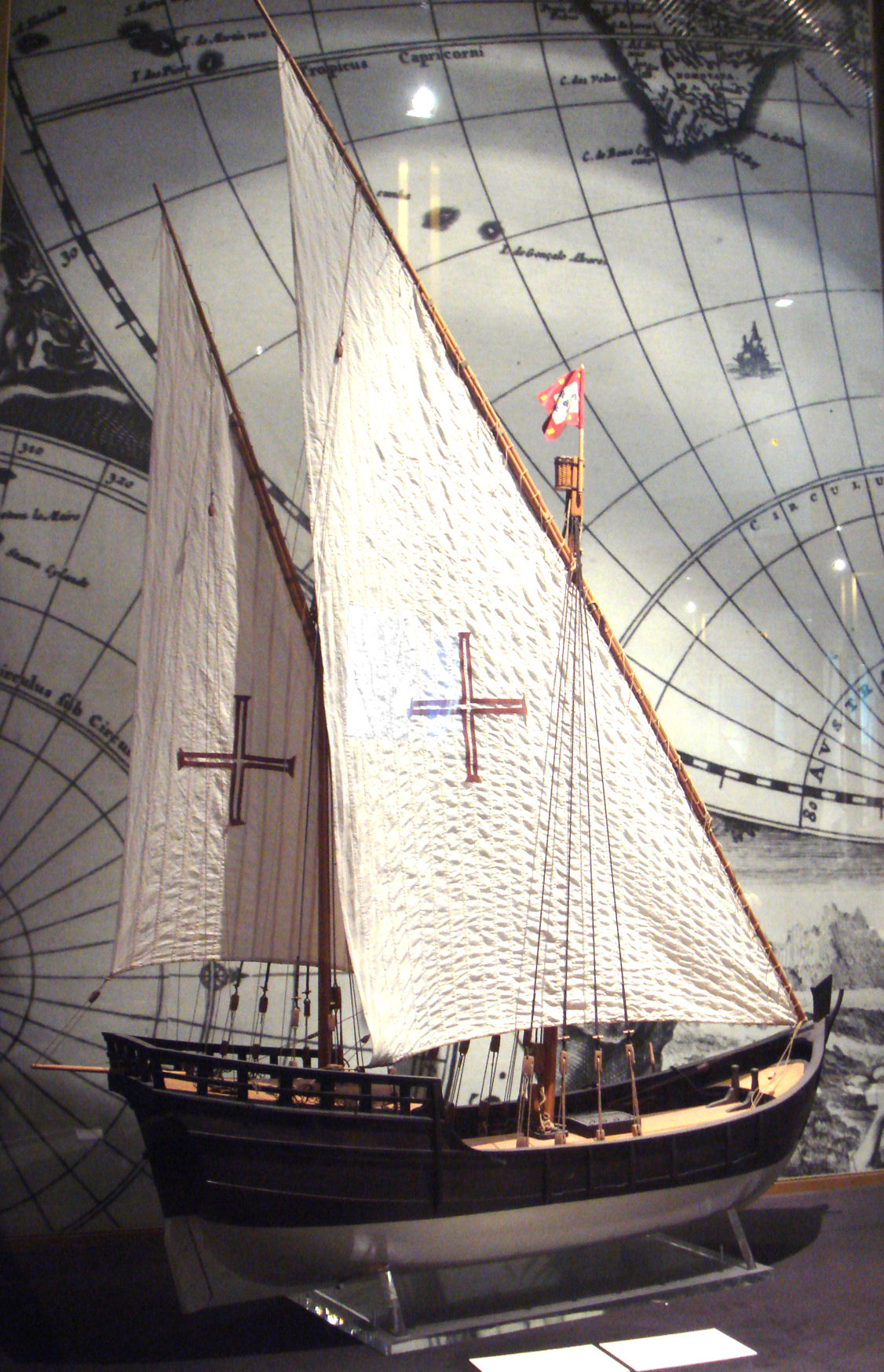

Caravel ships, developed in the Algarve around 1450, were based on incremental improvements of ship architecture and sailing techniques. At its core is the lateen, a triangular sail set on a long yard mounted at an angle on the mast, and running in a fore-and-aft direction. It allowed to sail “against the wind”. The lateen together with an innovative ship architecture based on local fisher boats allowed for much improved agility and better navigation. Because the lateen facilitated to use the wind not only when it was blowing from behind, it did not depend on oars and man-power. That in turn meant the caravel required a reduced crew of 20 sailors, compared to 80 for the earlier galleys. Hence, much less water and food had to be carried and longer voyages became feasible.
The improvement of several navigation instruments and their utilization on ships meant that the sailors could identify their location even when out of sight of a coast. The compass allowed to identify the orientation and cardinal points even when it was cloudy for days or weeks. The astrolabe allowed to measure the angle above the horizon of sun and polar star, to derive the time and the latitude.
Furthermore, techniques for maps and drawing charts had improved to the point, that they became indispensable for accurate navigation. The Portolan charts were nautical charts developed in the 13th century in the Mediterranean. They are characterized by a network of “windrose lines” called rhumblines, which emanate out from compass roses located at various points on the map. The lines in these networks are generated by compass observations to show lines of identical direction.
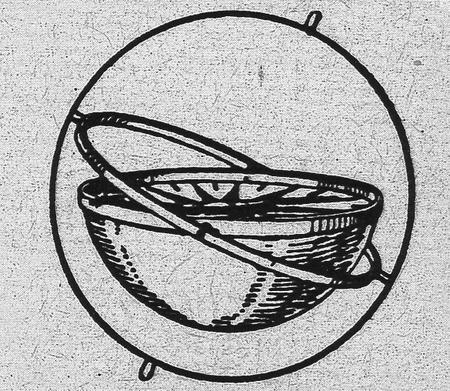
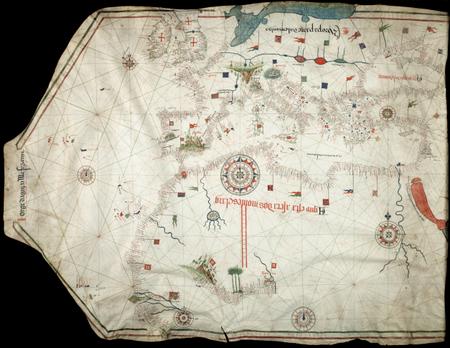
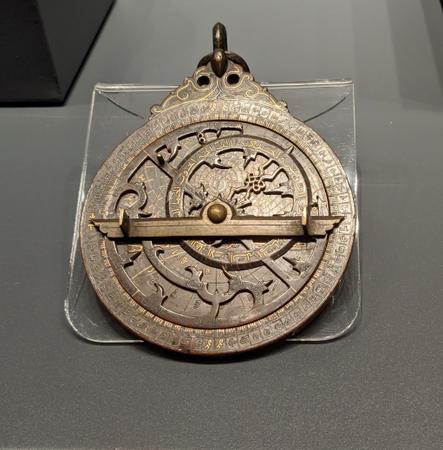
These and other innovations did not appear suddenly but have been developed and improved over centuries. The lanteel sails have already been used by Romans. The compass has appeared in China around 100 BC, and developed during the Song dynasty into its modern form with a metallic needle in the 11th century. Predecessors of the astrolobe have been in use by Greeks 200 BC and gradually improved by Arabs over the centuries. But in the 14th century all these techniques have become sufficiently reliable and accurate to facilitate navigation far away from any coast. Together, advances in ship design, accurate instruments for location and navigation and improved cartography, meant that voyages could take much longer without re-provisioning, and could be directed across the oceans.
When João II assumed the throne in 1481, Portugal was in a dire situation. Central power was weak, the finances were desolate, the population was poor and few, and the country was at the periphery of Europe with little prospect to improve its odds. Within few decades everything changed. Portugal became the richest nation in Europe, its empire extended from Brazil to Africa, India, to Japan, its technology and science were leading the way for other nations. How did this astonishing change of affairs come about? I think it can be attributed to three main factors.
First, the technology described above has advanced to the point to facilitate voyages across the Atlantic and around Africa to India.
Second, the trade between Europe and South Asia was highly profitable and could be re-routed to the sea lanes around Africa. Up to 1500 it had been directed through the Arabic countries and the Indian ocean, organized by Italian merchants in Venice and Genoa and mediated by Arab trade networks. This trade was profitable but unreliable and dependent on many intermediaries. The re-orientation of these trade networks to the sea route around Africa brought several advantages. It was faster, more reliable and the profit had not to be shared with intermediate merchants. It greatly helped, that Portugal found and used enormous amounts fo Gold on Africa’s West coast and later in Brazil. Thus, Portugal could outcompete the Italian merchants who lost much of their business and wealth as a consequence. The Medici bankers however, still continued to benefit because they were one of the main financiers of the new Portuguese trading network.
Third, under the leadership of King João II Portugal modernized, developed the necessary faculties, formulated the vision for a global trading network and seaborne empire, and executed this vision with great skill. Among the first things João II did after he had consolidated his power, was to found a Council of Scholars, eminent churchmen, rabbis, mathematicians and cosmographers. This council provided much valuable advice throughout João’s reign and helped to attract competent and knowledgeable people from all over Europe. Technical developments for ship building and navigation was deliberately encouraged and massively supported. It was also jealously protected and hidden from other European competitors.
During the decades of João II’s reign and his successor Manuel, Portugal, with a comparatively tiny population of 1.5 million people, seized a unique opportunity in the history of mankind and became a rich and technologically leading European nation with a huge, seaborne empire. But the downturn was almost as rapid as the rise. By 1580 Portugal had lost its competitive advantage and was overtaken by Spain in military power and trading networks. Because of squandering of resources and unsuccessful wars it became a dependence of Spain and lost its independence and wealth.
1834 - 1890
In the middle of the 19th century Portugal had another golden era. It became a constitutional monarchy where the king, Parliament and the government shared power. The modernization of the whole society brought a reformation of the educational system with the founding of countless schools, polytechnics and some Universities. Liberal and tolerant laws fostered the flowering of science, technology and the arts and also brought a rapid growth of industry amid the European industrial revolution. It became the most advanced society in Southern Europe admired throughout the continent and appreciated by its own citizens. The well known Danish author Hans Christian Andersen enjoyed a lengthy visit in Portugal and wrote in 1865:
What a transition to come from Spain into Portugal. It was as if flying from the Middle Ages into modern times.
As in the 16th century, Portugal fortunes did not last very long. At the end fo the century it had become a victim of the the great powers, in particular of England and was outperformed in its industrial development by other European nations like England, France and the rising Germany. The country went into turmoil, became a Republic in 1910 but could not stabilize its economic downturn. As a result, António de Oliveira Salazar grabbed the power and became dictator in 1933. He stabilized the economy, navigated Portugal successful and neutral through World War II, but then he led a disastrous colonial war in Africa and eventually became an obstacle to modernization and development.
After the Carnation Revolution in 1974, which mostly avoided violence, Portugal became democratic, and in 1986 it joined the European Union. Today Portugal is a prosperous quickly developing country, firmly anchored in the values of the enlightenment, science and the liberal society.
As the colorful history of this small European nation illustrates, ups
and downs can follow each other quickly and suddenly. Decisions and
orientation of leaders can matter greatly, sometimes making the
difference between an upwards and a downwards trajectory. But it is encouraging to
observe, that Portugal had its best times whenever it followed the
ideals of a liberal, tolerant society searching the truth in science
and the arts.
(AJ June 2022)
